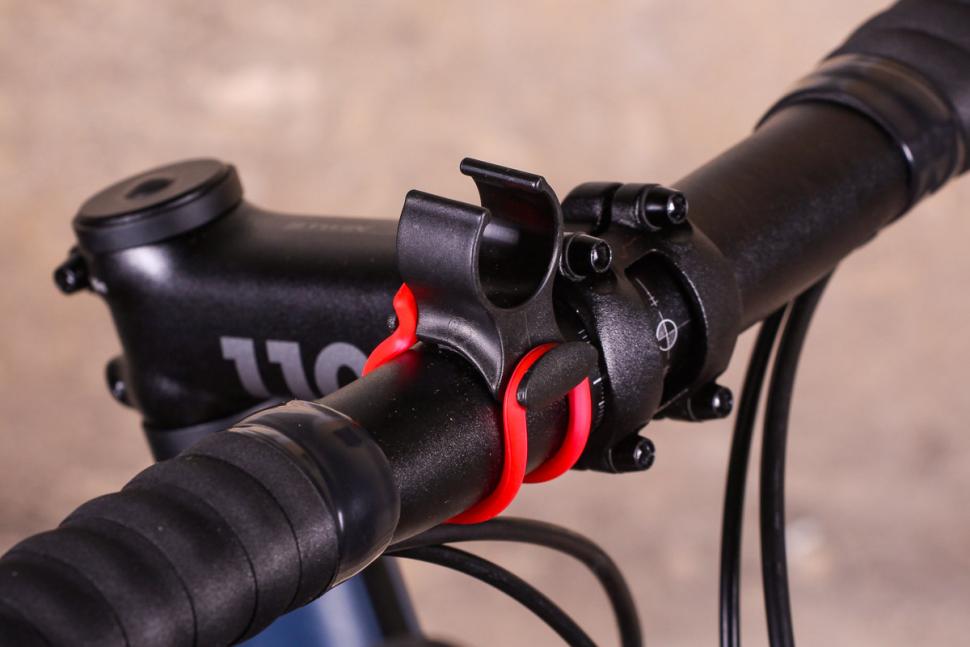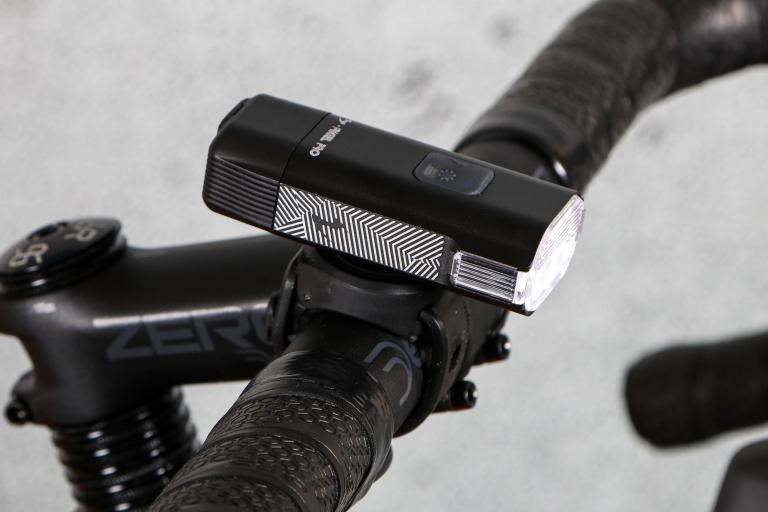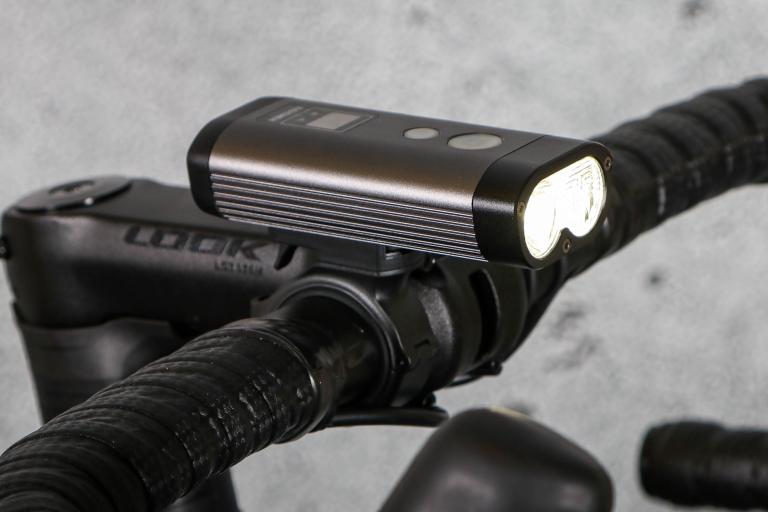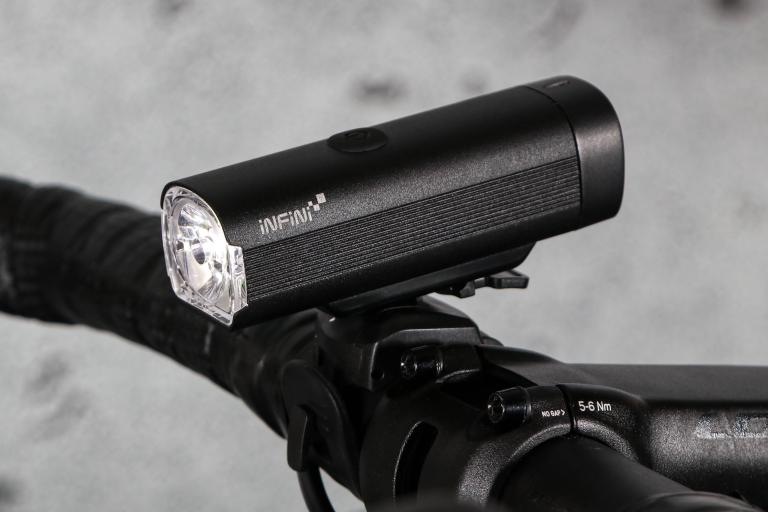- News
- Reviews
- Bikes
- Accessories
- Accessories - misc
- Computer mounts
- Bags
- Bar ends
- Bike bags & cases
- Bottle cages
- Bottles
- Cameras
- Car racks
- Child seats
- Computers
- Glasses
- GPS units
- Helmets
- Lights - front
- Lights - rear
- Lights - sets
- Locks
- Mirrors
- Mudguards
- Racks
- Pumps & CO2 inflators
- Puncture kits
- Reflectives
- Smart watches
- Stands and racks
- Trailers
- Clothing
- Components
- Bar tape & grips
- Bottom brackets
- Brake & gear cables
- Brake & STI levers
- Brake pads & spares
- Brakes
- Cassettes & freewheels
- Chains
- Chainsets & chainrings
- Derailleurs - front
- Derailleurs - rear
- Forks
- Gear levers & shifters
- Groupsets
- Handlebars & extensions
- Headsets
- Hubs
- Inner tubes
- Pedals
- Quick releases & skewers
- Saddles
- Seatposts
- Stems
- Wheels
- Tyres
- Health, fitness and nutrition
- Tools and workshop
- Miscellaneous
- Cross country mountain bikes
- Tubeless valves
- Buyers Guides
- Features
- Forum
- Recommends
- Podcast
review
£100.00
VERDICT:
Powerful, durable and easy-to-operate commuting light with a useful daytime mode
Weight:
96g
Contact:
At road.cc every product is thoroughly tested for as long as it takes to get a proper insight into how well it works. Our reviewers are experienced cyclists that we trust to be objective. While we strive to ensure that opinions expressed are backed up by facts, reviews are by their nature an informed opinion, not a definitive verdict. We don't intentionally try to break anything (except locks) but we do try to look for weak points in any design. The overall score is not just an average of the other scores: it reflects both a product's function and value – with value determined by how a product compares with items of similar spec, quality, and price.
What the road.cc scores meanGood scores are more common than bad, because fortunately good products are more common than bad.
- Exceptional
- Excellent
- Very Good
- Good
- Quite good
- Average
- Not so good
- Poor
- Bad
- Appalling
Exposure's Sirius MK7 Daybright is an easy-to-use light that's suitable for commuting – and more – and for getting you noticed in daylight. Various different programs allow you to choose the balance between brightness and run-time that best suits your needs, and the overall build standard is very high.
- Pros: Powerful, solid construction, good daytime mode
- Cons: Beam is quite narrow
Like most of Exposure's lights, the Sirius has an anodised 6063 aluminium casing. Drop it and you might scratch the finish but you're unlikely to cause any damage that's going to affect the function. It really is ruff 'n' tuff. The light has an IPX6 rating, meaning that water won't get inside during normal use.
> Find your nearest dealer here
You get to choose from seven different programs. Program 1, for instance, offers you 1.5hrs of run-time in high mode, 4hrs in medium mode and 10hrs in low mode. Program 5, to take another example, offers just two modes, one with 3hrs of run-time and the other with 10hrs. Select the program that works best for you and then, when you're riding along, you just hit the button on the back to move between modes. I've been using this light since November, and I've never had any trouble finding and pressing that button in winter gloves.
Little LEDs alongside the button shine for a couple of seconds to tell you which mode you're in. Green indicates high, amber is medium and low is red, which is pretty easy to remember. The LEDs then become battery level indicators, again using a traffic light sequence, giving you plenty of opportunity to switch to a low power mode if you're running on fumes. The lowest power constant mode has a run-time of 36hrs so you really shouldn't get caught out. Exposure prints all of the various run-times on the bottom of the aluminium casing, and in my experience they're pretty accurate.
The light comes from a white XPL2 Cree LED and Exposure claims a maximum of 750 lumens. The beam is very round and quite concentrated. It punches a big hole into the darkness but you don't get the spread that you do with some rivals.
Is that an issue? It depends what you're after. I've been using the Sirius for commuting from the office, which is in a city, to my house, which is in a little village 15 miles away. The first part of the journey is on well-lit streets, the rest is on pretty well-used roads. I've been using a program that allows me to flick between a medium mode (in town and when there's traffic coming in the opposite direction) and high mode (when I'm on an unlit road without any traffic).
I've never felt like I've needed any more light for the commute than the Sirius offers. You get good side visibility too, courtesy of a lens that extends well forward of the body of the light, a hood in the aluminium casing preventing any of that light shining up into your eyes. On the other hand, I would want a wider beam for a fast training ride out in the lanes, for which the Sirius isn't intended.
> Buyer's Guide: The best front lights for cycling
The Daybright mode is an interesting feature that, as the name suggests, is intended to get you seen while riding during the day. It's a pulse pattern that's really bright and noticeable from a long way off – we're talking hundreds of metres – even on a sunny day.
The Sirius snaps into a little plastic bracket that sits on your handlebar. It's not the most sophisticated system but it works fine. The bracket itself is held in place by a stretchy O-ring. Again, it's not going to win any prizes for innovation but it does the job and switching between bikes is a cinch. The back of the bracket is shaped to fit round bars so it doesn't play nicely with anything aero. If you want to helmet-mount the Sirius for off-road riding a separate bracket will cost you £22.
The Sirius is powered by a 2,900 mAh lithium-ion battery and run-times range from 1.5hrs to 36hrs. You can recharge from either the mains or a USB port. Recharging from empty takes from 4hrs.
Although £100 might seem like a lot to spend on a commuting light, the Sirius is bright, the Daybright mode could well be useful for you, and Exposure's build quality is excellent. You also get a two-year warranty here. This is a high-quality product that should last, so although the initial outlay is pretty high, you're likely to get your money's worth over the long haul.
Verdict
Powerful, durable and easy-to-operate commuting light with a useful daytime mode
road.cc test report
Make and model: Exposure Sirius MK7 DayBright
Size tested: Length: 110mm Head Diameter: 28mm
Tell us what the light is for, and who it's aimed at. What do the manufacturers say about it? How does that compare to your own feelings about it?
Exposure says, "Uprated output in a compact form for the perfect urban commute light and can be adapted easily with a choice of 7 programs. Smart Port+ allows the addition of optional accessories including Support Cells and Red Eye rear lights. Side illumination for 180° visibility and safety at junctions. Can be helmet mounted (helmet mount sold separately). Available in a pack with TraceR Mk2 ReAKT."
Tell us some more about the technical aspects of the light?
Exposure lists these features:
Output
LED Configuration: 1 x White XPL2 Cree LED
Lumens: Max 750
Battery
Battery: 2,900 mAh Lithium-Ion
Runtime: 1.5hrs - 36hrs
Rechargeable: Mains and USB
Charge Time: 4hrs
Construction
Weight: 84g
Anodised 6063 Aluminium
Water Resistance IPX6
Dimensions
Length: 110mm
Head Diameter: 28mm
Rate the light for quality of construction:
10/10
This is a tough, rugged light. It should last years.
Rate the light for design and ease of use. How simple was the light to use?
10/10
It's simple. Details of the various programs and run-times are listed on the casing. Everyone should do that!
Rate the light for the design and usability of the clamping system/s
8/10
It's a very simple system that works well. The only issue is that it's difficult to fit on non-round bars. You can fudge it but the light isn't as stable as it is on a round bar.
Rate the light for waterproofing. How did it stand up to the elements?
9/10
It has an IPX6 rating so powerful water jets won't get inside. Rain isn't a problem.
Rate the light for battery life. How long did it last? How long did it take to recharge?
8/10
You get two hours of light even on the highest power constant mode. That should be plenty for most people's commutes. The lowest power constant mode gives you 36hrs. Recharging from empty takes about 4hrs.
Rate the light for performance:
9/10
This is a great light for urban commuting. I've been using it for rural commuting too and it works well there as well, only found wanting on the fastest descents.
Rate the light for durability:
8/10
The build is solid, backed up by a two-year warranty.
Rate the light for weight:
8/10
It's under 100g, not that I'd be too bothered either way on an urban commuting light. It's light enough to mount on a helmet if you want to press it into service for off-road riding too.
Rate the light for value:
7/10
Okay, it's 100 quid but it puts in a great performance and is solid enough to put up with all kinds of daily use and abuse. A really good light is something worthy of investment. There are some good lights out there for a fair bit less, though, such as Cateye's Volt 800, which is £89.99.
Tell us how the light performed overall when used for its designed purpose
Exposure says that this light is designed for urban commuting. It can handle that very easily indeed, and more besides.
Tell us what you particularly liked about the light
Solid construction and ease of use.
Tell us what you particularly disliked about the light
The beam is very round and concentrated. The breadth isn't great.
How does the price compare to that of similar products in the market, including ones recently tested on road.cc?
£100 is a lot for a commuting light, but the performance and the build quality go a long way to justifying the price. You can get more lumens for less money – but that doesn't necessarily get you a better bike light. Take the Gemini Xera Flashlight 950, for example.
Did you enjoy using the light? Yes
Would you consider buying the light? Yes
Would you recommend the light to a friend? Yes
Use this box to explain your overall score
Although the price is high, this light backs that up with an exceptional performance and durability, so I think a 9 is justified here.
About the tester
Age: 48
I usually ride: My best bike is:
I've been riding for: Over 20 years I ride: Most days I would class myself as: Expert
I regularly do the following types of riding: commuting, club rides, sportives, general fitness riding
Mat has been in cycling media since 1996, on titles including BikeRadar, Total Bike, Total Mountain Bike, What Mountain Bike and Mountain Biking UK, and he has been editor of 220 Triathlon and Cycling Plus. Mat has been road.cc technical editor for over a decade, testing bikes, fettling the latest kit, and trying out the most up-to-the-minute clothing. He has won his category in Ironman UK 70.3 and finished on the podium in both marathons he has run. Mat is a Cambridge graduate who did a post-grad in magazine journalism, and he is a winner of the Cycling Media Award for Specialist Online Writer. Now over 50, he's riding road and gravel bikes most days for fun and fitness rather than training for competitions.







TNT can sit on my seatpost and swivel. Not giving a penny to the vile bean counters.
Hey Surrey rider do you even know where Hebdon Bridge is? Have you ever been there? Yeah thought not. Soft southern Jessie , we welcome your opinion.
What cars do to people ...
Dawlish driver suffered seizure before smashing into wall...
I agree. Off to sign.
With both Hunt and Scribe, I really think you'd be mad to get wheels from anybody else.
Weight is a problem when it costs you in energy on the uphill which is lost on the downhill, or lost in braking. But if that energy can be...
And because they are so likely to flip and are heavier they have to have stronger and wider A pillars which reduces visibility.
What amazes me most is how small the north american market is....
"perhaps unavoidable", as gently easing off on the accelerator pedal for 2 seconds would obviously be out of the question.